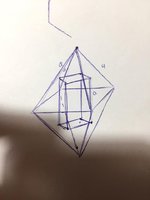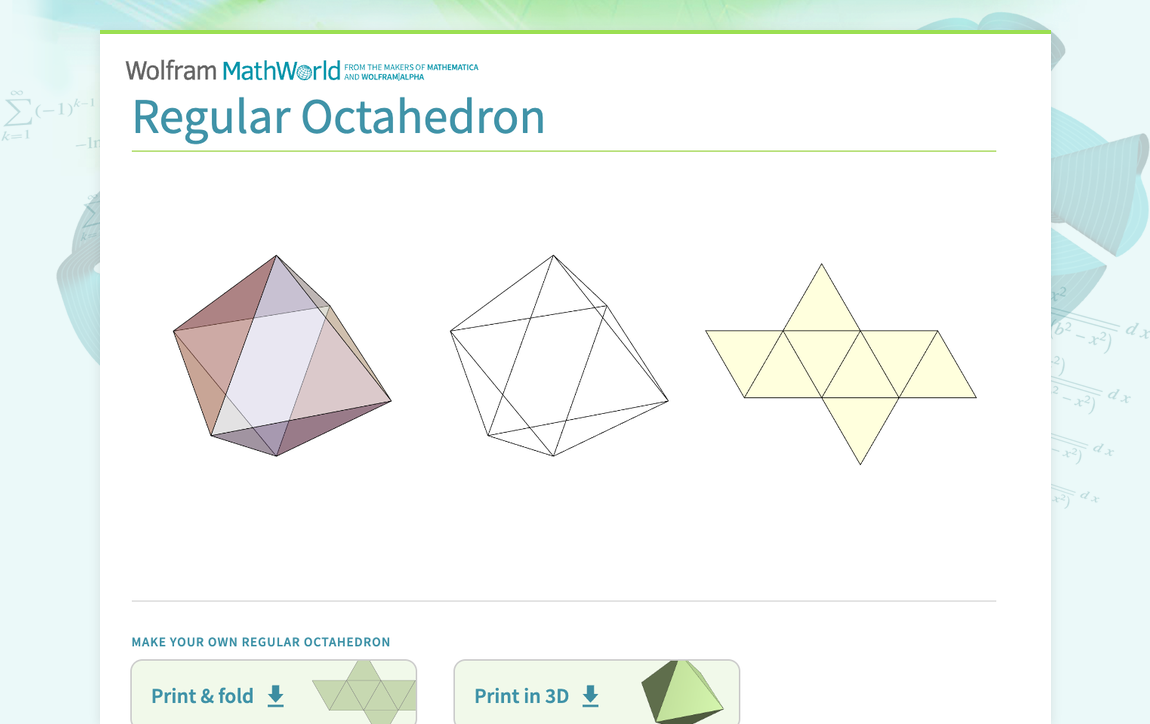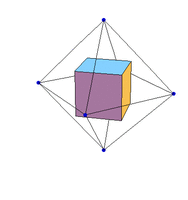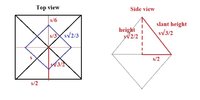Ana.stasia
Junior Member
- Joined
- Sep 28, 2020
- Messages
- 118
The question is:
The centers of the sides of the regular octahedron (does the "regular" imply that all edges are equal or just the base ones) are the vertices of a cube. Calculate the volumes of both shapes.
I have tried to draw it, however, it seems my cube is more of a square.

The hint given for this problem is to notice the similarity of the triangles and use them to calculate the edge of the cube. However, I cannot seem to figure out which triangles and how they would relate to the edges of the cube. What am I missing?
Thank you in advance
The centers of the sides of the regular octahedron (does the "regular" imply that all edges are equal or just the base ones) are the vertices of a cube. Calculate the volumes of both shapes.
I have tried to draw it, however, it seems my cube is more of a square.

The hint given for this problem is to notice the similarity of the triangles and use them to calculate the edge of the cube. However, I cannot seem to figure out which triangles and how they would relate to the edges of the cube. What am I missing?
Thank you in advance



